The site author's system as of September 2022. For a full list of items, see below.


The site author's GPO clock system. Although intended to look 1940's-ish, this system also attempts to show as many items from different periods so some items are earlier, some later.
Click on the numbers above to go to the relevant item, then 'page back' to return here.
1) Master Clock Type 46, Magneta, 1937, producing pulses every 1 second, 6 seconds and 'Tone control' which consists of 1 second pulses for the first 3 seconds in any 6 second period (3 on followed by 3 off).
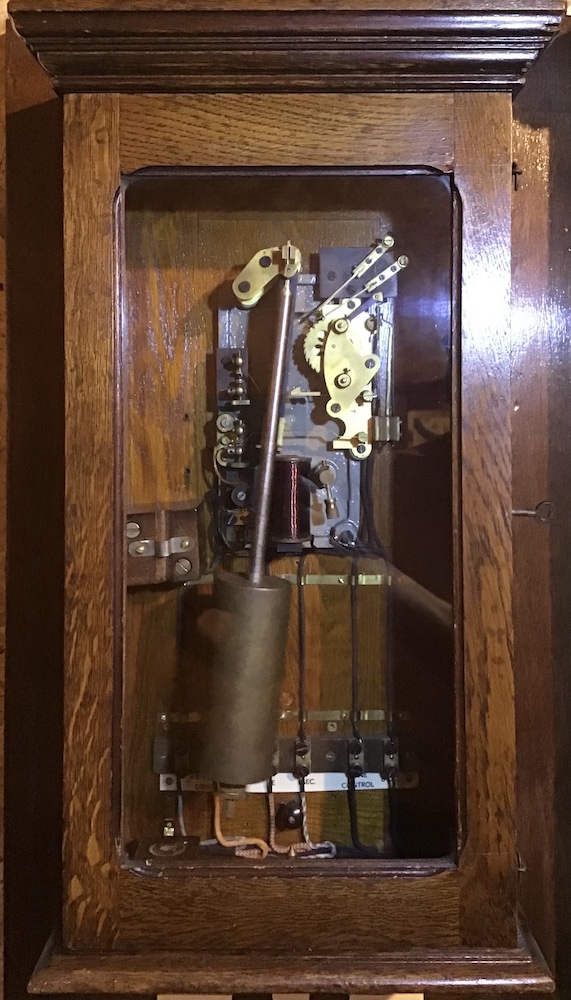
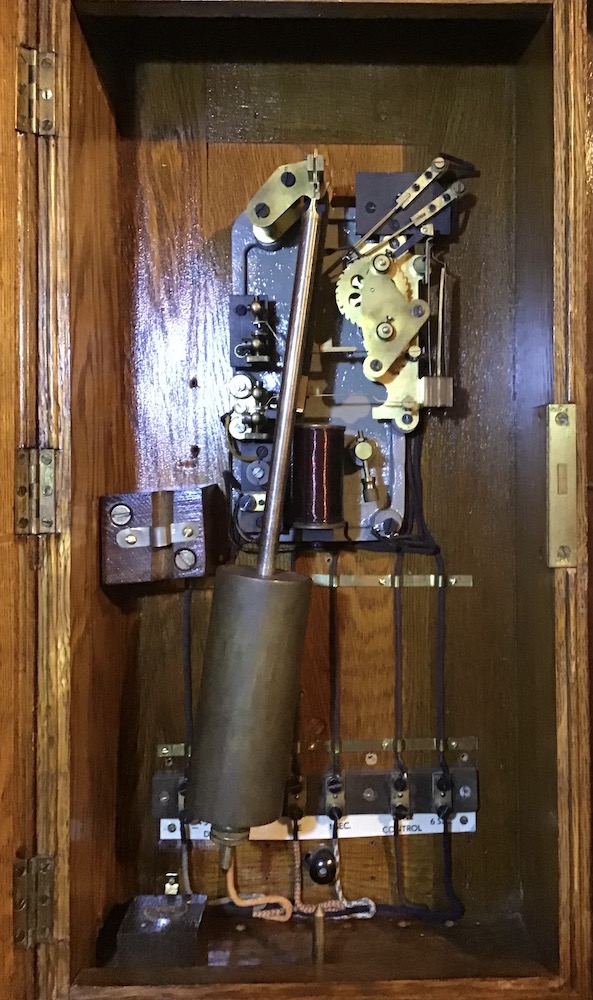
2) Master Clock Type 36 Mark 236, Gent's of Leicester, 1936.

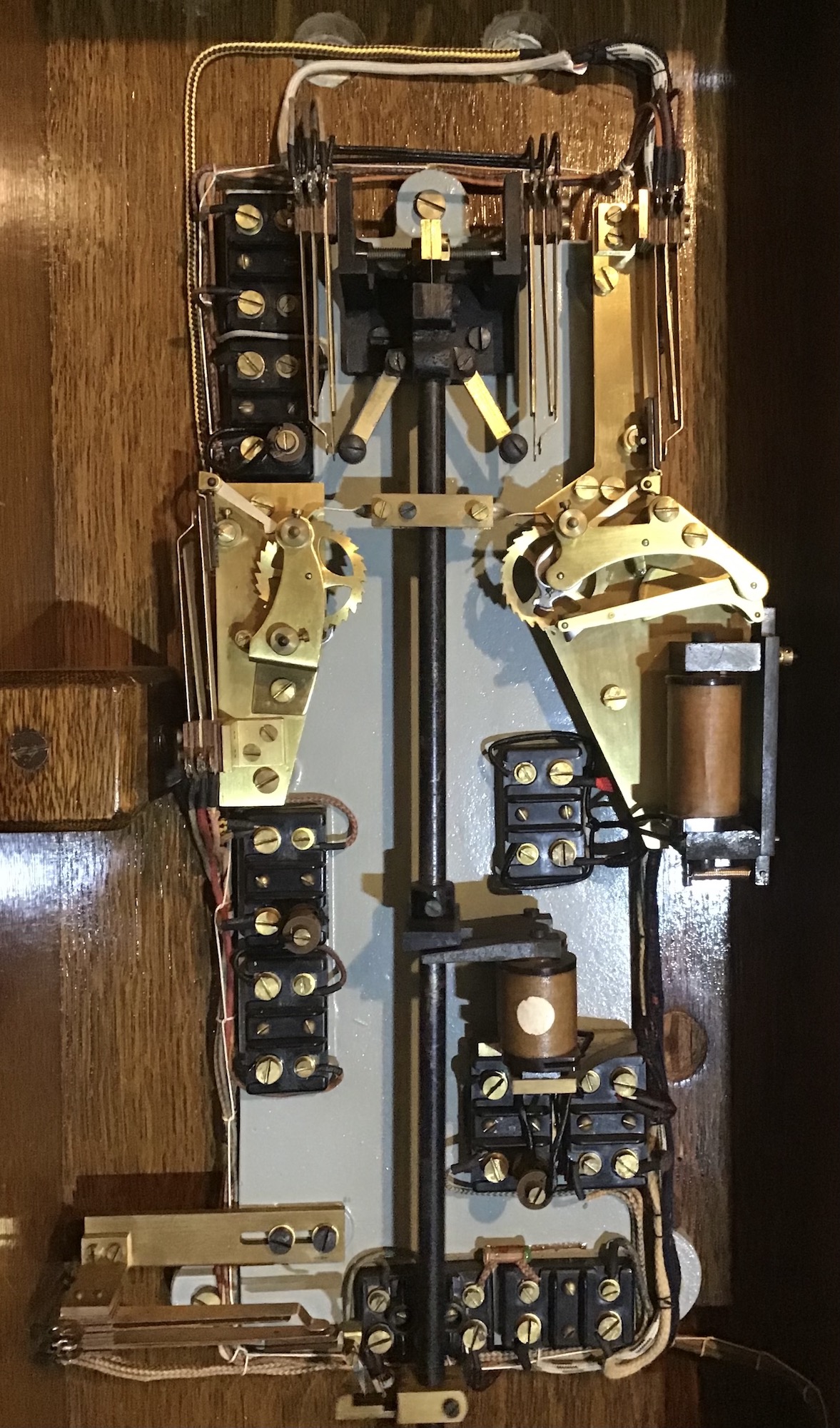
3) Master Clock Type 36 Mark IV, Gent's of Leicester, 1940.


4) Master Clock Type 36 Mark 235, Gillet & Johnston, 1932. This early clock preceded the fitting of an internal advance/retard key.

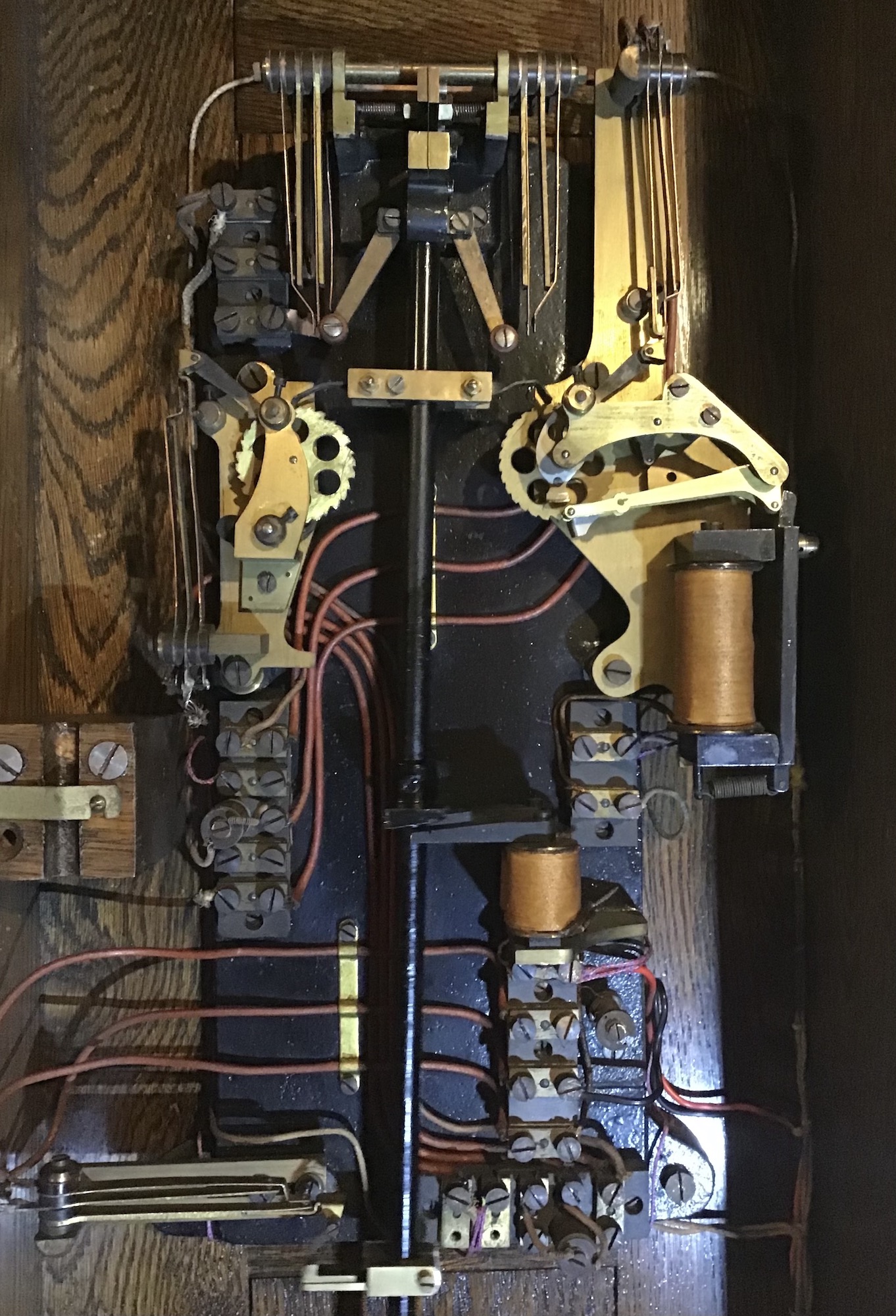
5) GMT 34/0 (early type, 1927-1955) clock relay units. These power the master clocks, synchronise the 1 second clocks and distribute the 1, 6 & 30 second pulses. The very early version in the left two photos (1927-1936) also has the mounting that once contained the change over key which would have switched the GMT 34 between the 'Regular' and 'Standby' clock No. 36's. This key pre-dates the more familiar Key 289B (see no. 14).

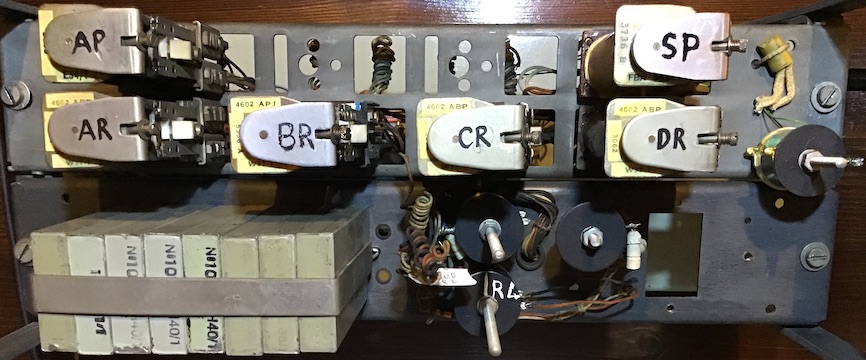
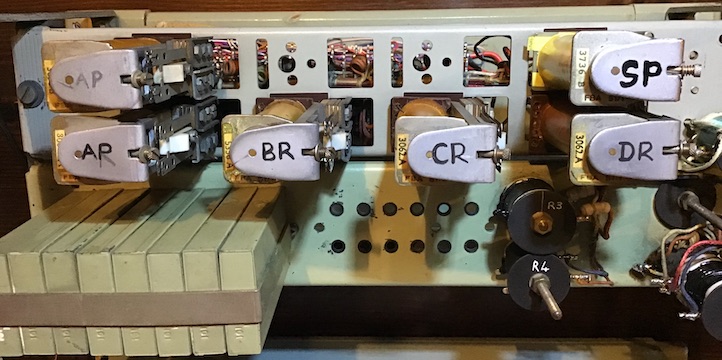
6) GMT 34/1 (later type, 1955-1980's) clock relay units. These units power the master clocks and distribute the 1, 6 & 30 second pulses.
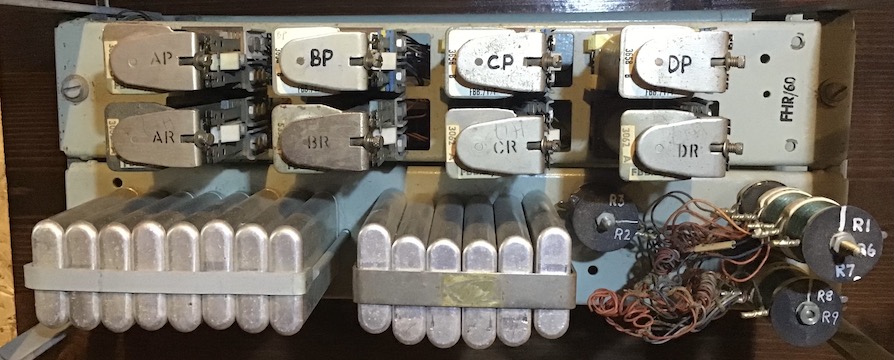
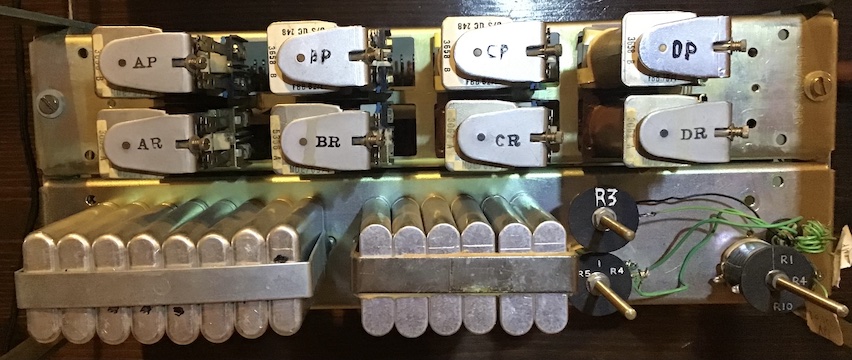
7) GMT 35/1 clock relay unit (1955-1980's). This powers the G & J master clock (see no. 4) and distributes the 30 second pulses for secondary clocks only. The wallboard also contains a fuse, lightning and heat coil protector unit as this circuit also runs around the barn here, plus a ammeter (Detector No. 4) which shows the current used in the 30 second clock circuit, and a 'Key 289A' as an advance/retard switch as the very early clock No. 36's did not have an internal one fitted.


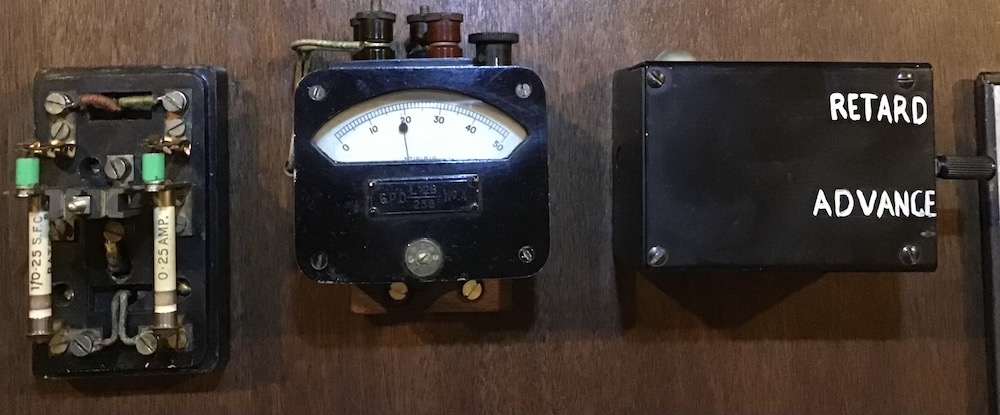
8) This home built unit contains a clock No. 38 which is known as a 'veeder' clock (date unknown) plus a Clock No. 44 (1955), both driven by the 6 second pulses produced by the Clock No. 46 (see No. 1). Clock No. 44 also uses the 3 x 1 pulses to send a 3 pip warning tone on calls connected by the operator and also call box calls a few seconds before the start of each three minute period which indicated that there would be a further charge if you continued the call.
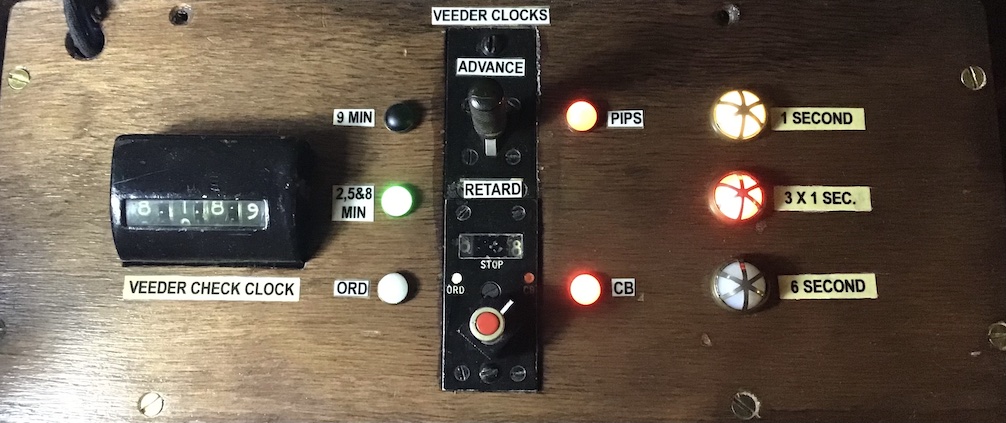
9) Clock No. 28, Gent's, 1957, seconds indicating, driven by one second pulses.


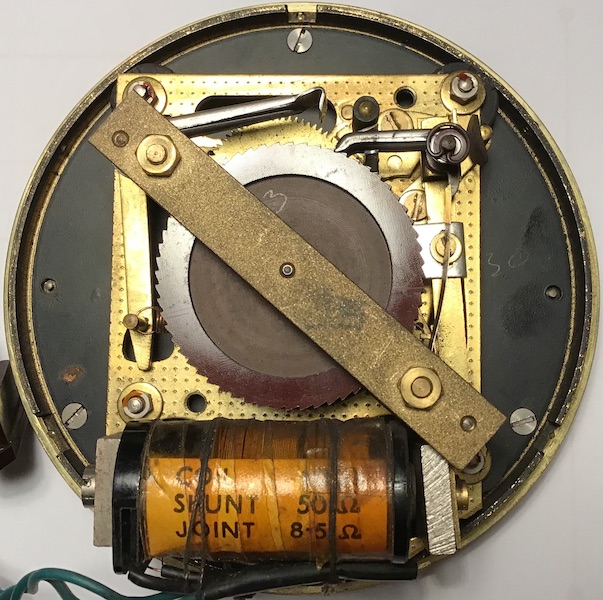
10) These are Grading Chart holders from pre-2000 strowger telephone exchanges. They come in 3 or 4 different sizes and make great 'picture frames' for holding system instructions and photos!

11) Clock No. 32 (1927). Used to synchronise Clocks No. 28 on systems that included them. These systems were set to gain slightly and this clock then stopped the one second clocks on the hour until the system caught up. This happened one hour after the daily 10am synchronisation pulse was received.


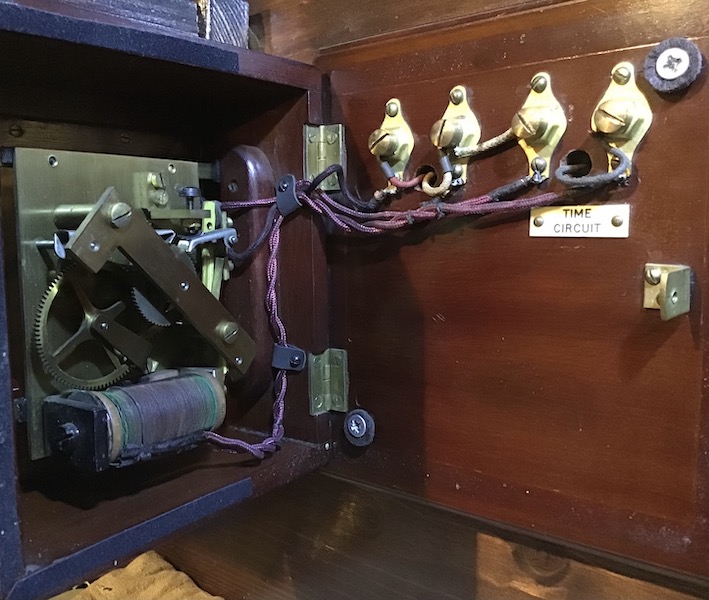
12) Clock No. 70A, Gent's (1968). These were used for timing purposes and give out a 30 second pulse every hour on the hour and also a second pulse that lasts a few minutes just before to just after 1pm. Here, I am using it to run the daily and also 1 second synchronisation circuits in place of a Clock No. 30 which are very rare and I don't have one! This also controls a non-official bell that gives a short ring on the hour.
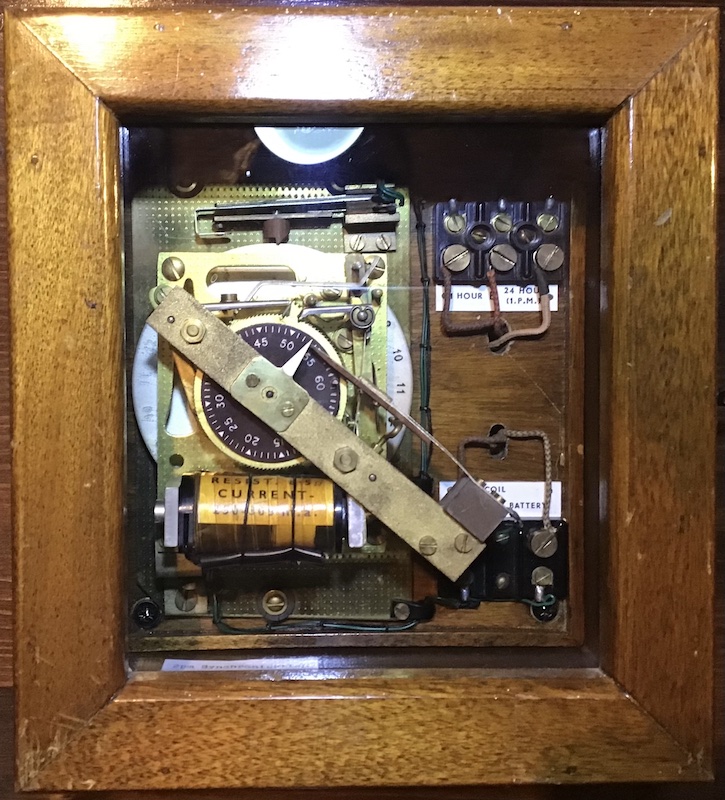
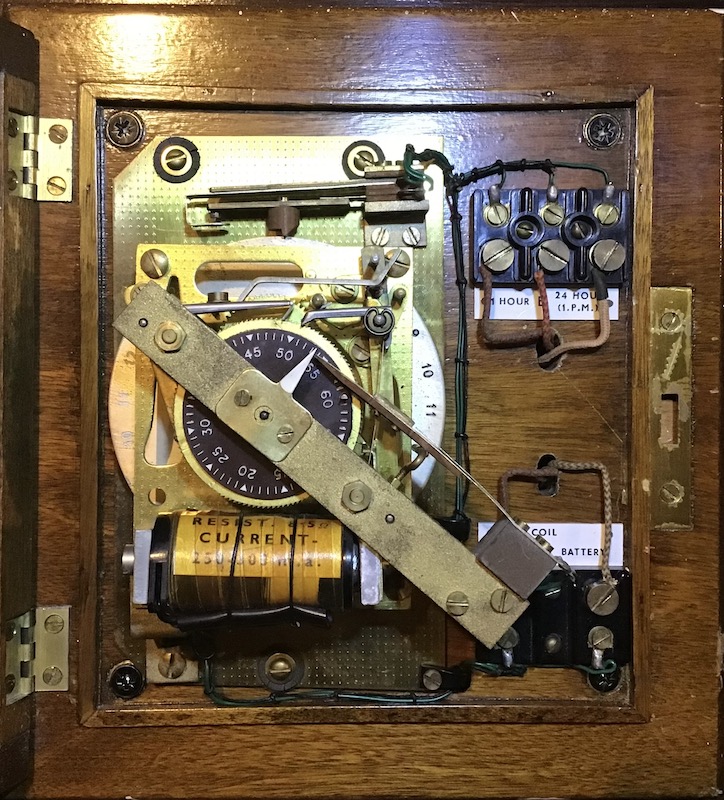

13) Clock No. 62A, Gent's, date unknown. This was used as a call count timer. a start switch would be operated and a bell would ring every 30 minutes so operators could count how many calls they had supervised. When the key is restored, 1 second pulses are connected to it until it has reached its home position where it then stops. The wallboard also houses the key switch and the call count bell, a Bell No. 56.
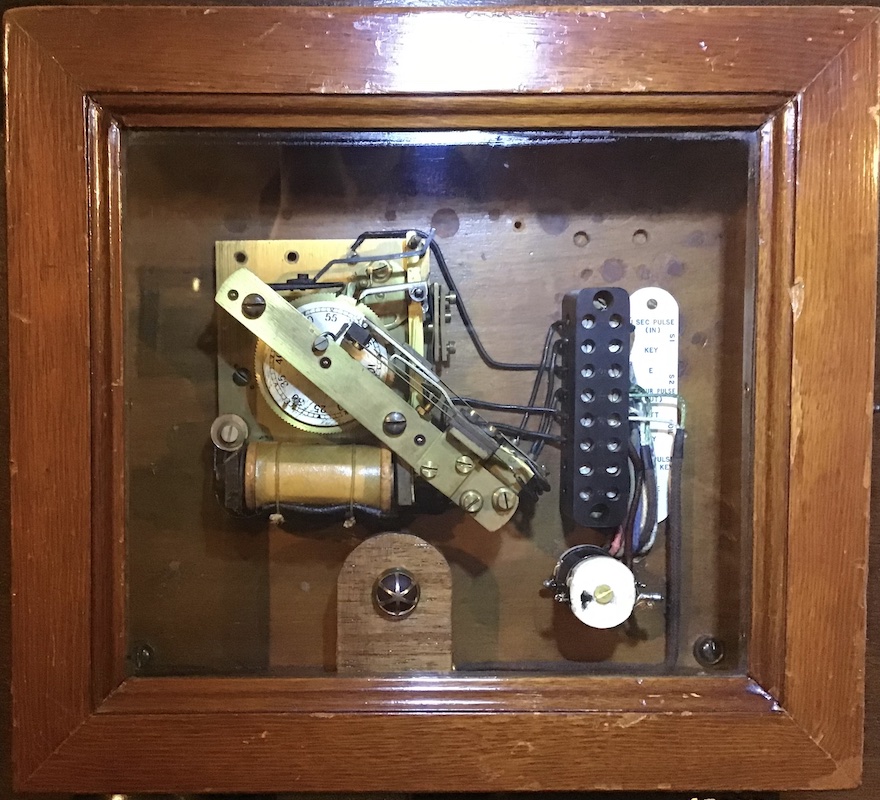
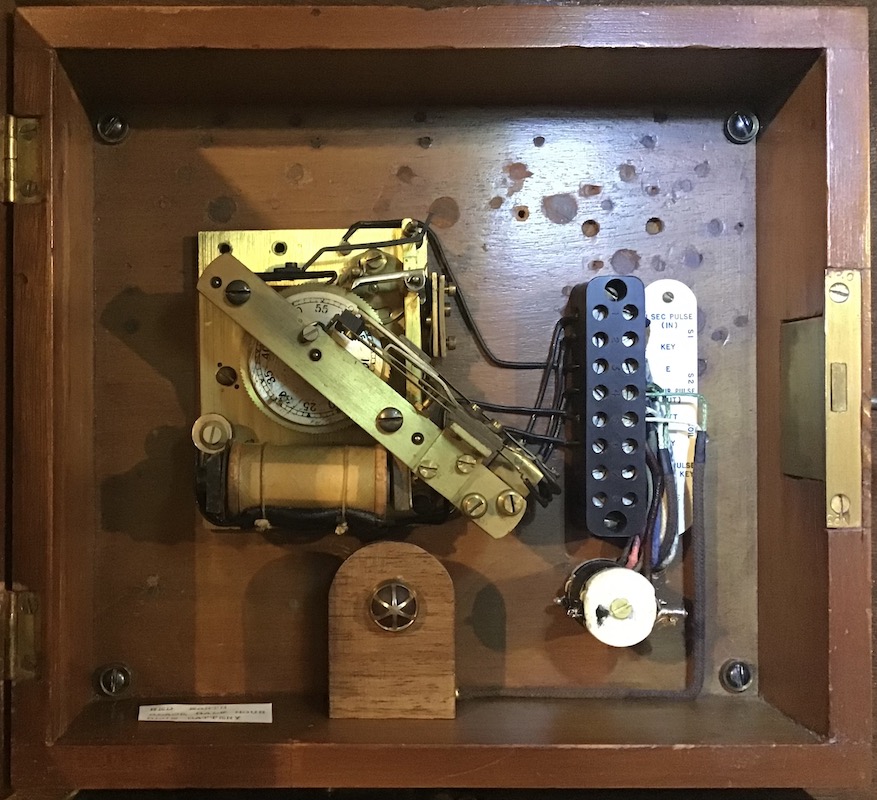

14) Key 289B. Basically a bank of 5 changeover switches connected to one handle. Used on larger systems that had duplicate GMT units or that had both duplicate Master clocks and GMT units. Often, they were used to just change over the equipment weekly but these were vital if something failed as by just operating this, the 'spare' system would take over and keep everything running whilst the faulty one could be examined and fixed.
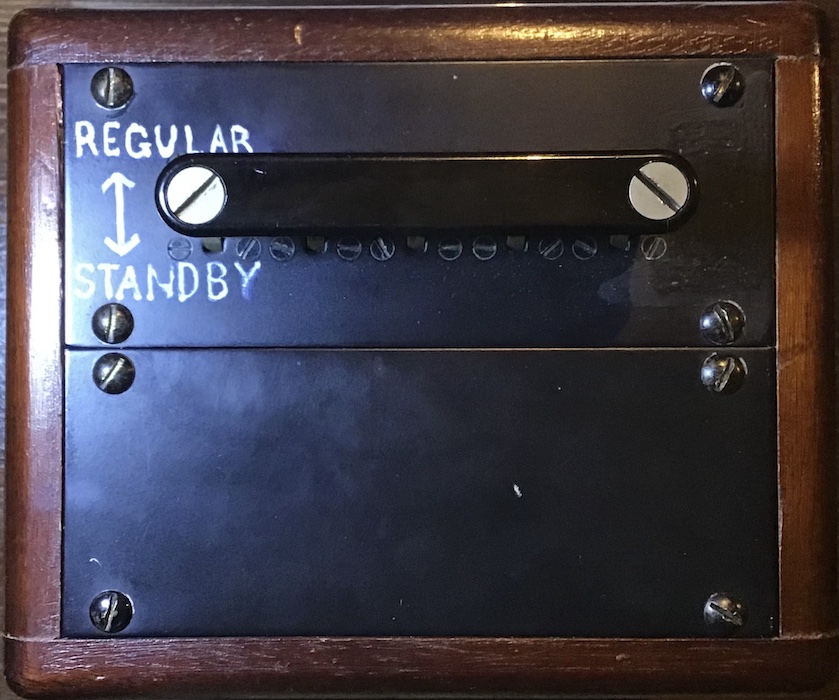
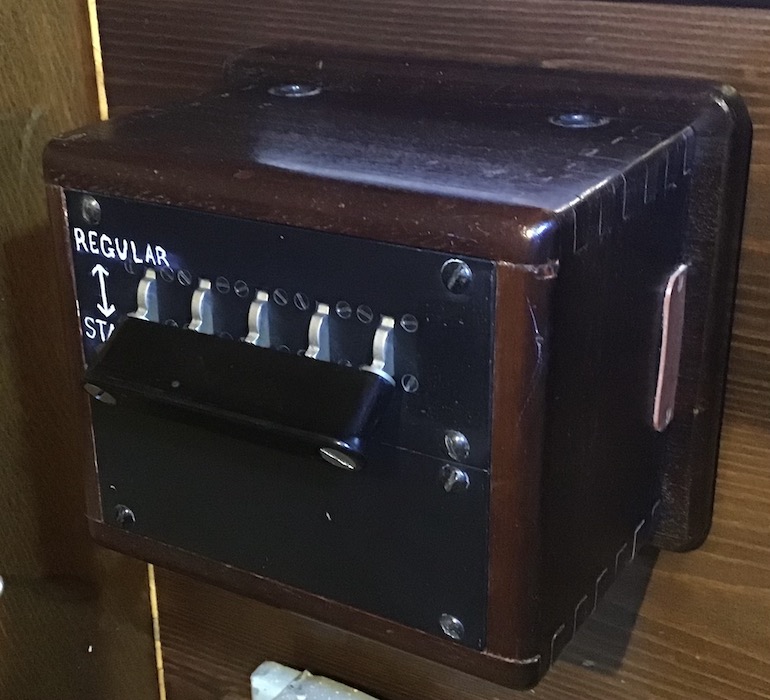
15) Fuse mountings. these are usually seen with the more familiar (and later) type 44A fuses, but here I use the original type 31 fuses. Although identical in operation, the type 31 were much more prone to accidental damage. When either type blows, a spring on the fuse, contacts a bar behind it and this operates a fuse alarm lamp and usually rings a bell which ensures a prompt response from the engineers. A similar spring protrudes from the front to help identify which fuse has blown.
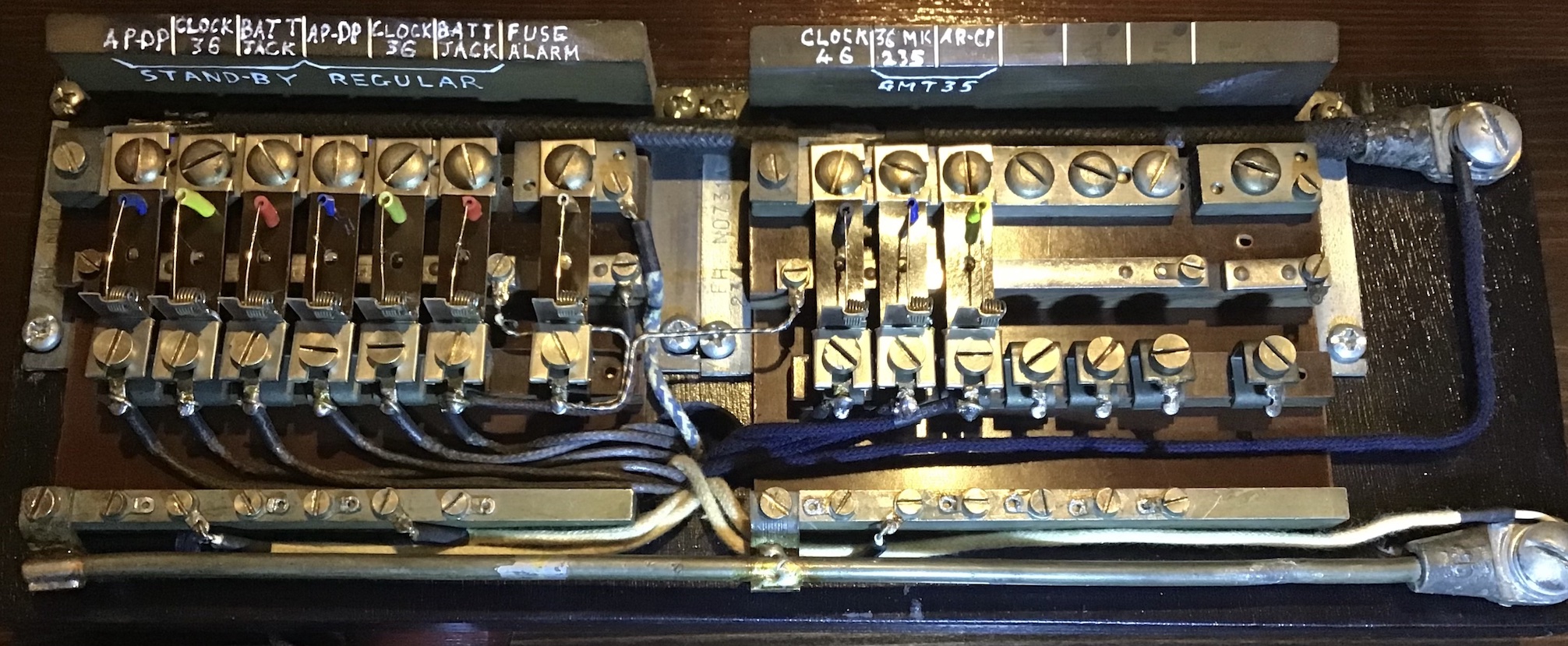
16) An 18 inch dial, No. 6 clock by Magneta, 1966. A 30 second wall clock for larger rooms. This is unusual in the fact that it is painted 'system grey' (BS 381C colour 631, Light Grey) instead of the specified brown (BS 381C colour 415, Imperial Brown).

17) A Clock No. 34, Gent's, date unknown. These 10 inch double dial clocks with the unique diamonds on the quarters were situated above switchboards suites supported by a 'Bracket, Clock, No. 4'. There was also a single dial version, Clock No. 34A that could hang on the wall at the ends of the suites. The diamonds were used for call count purposes, the count being done when the minute hand crossed the diamond.
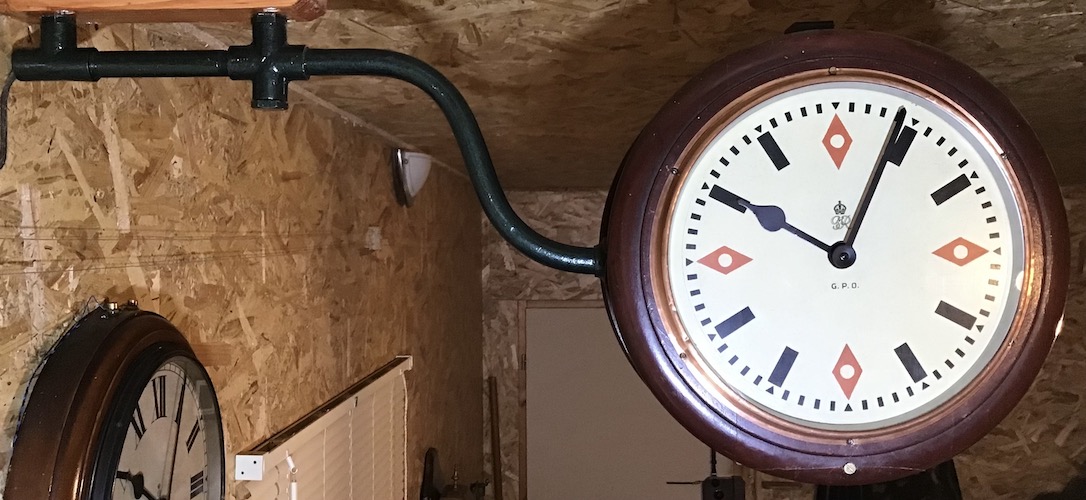
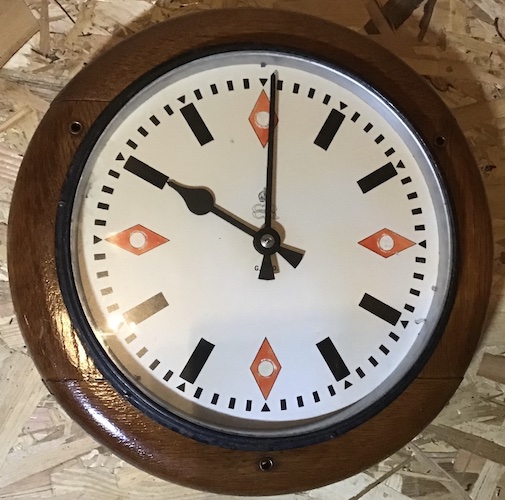
18) Clock No. 4, Gent's 1926. It has the terminal screws on top, and is my oldest pulse clock!

19) A standard 'fault docket' board. Occasionally, something would go out of adjustment or just stop working and a form would be filled in and put in the 'Awaiting attention' side for engineers to deal with. On completion of the repair it would be further filled out with the cause and action taken and placed into the 'cleared' section, thus keeping a record of all faults that the system had experienced.
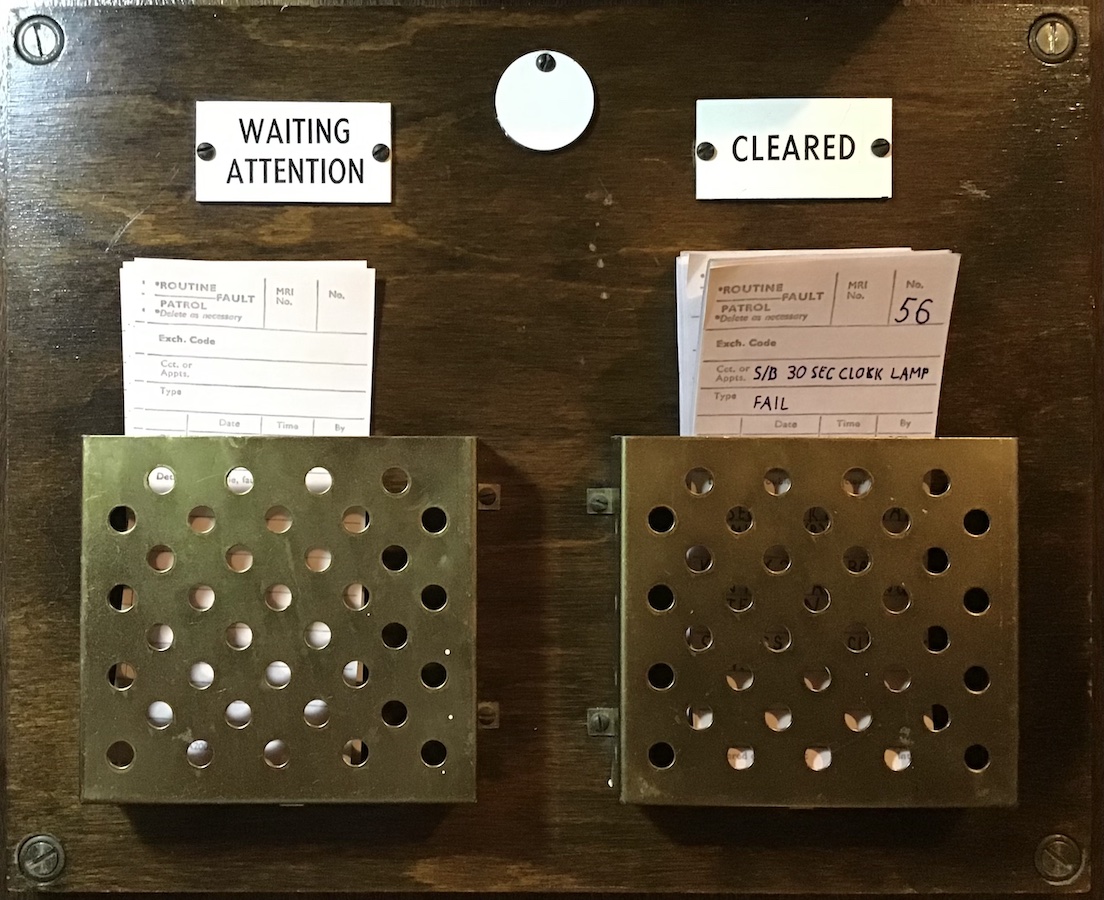
20) Central control unit. This is a non-original unit, homebuilt mostly from original GPO parts which allows me to see how the system is performing, having meters (Detector No. 4's) showing the input voltage and also the current drawn by the 30 and 1 second clock circuits. It also includes a number of additional fuses and switches, along with tell tale lights so that the output pulses can be observed. Being able to switch the 1 seconds clocks off at night is very useful! Official GPO systems never had one of these.

There are various other types of wall clocks and also maintenance equipment which are not shown in the main photograph. Below is a home built 'Stand, Clock maintenance, 2A'.
There is an article on this clock stand, click here
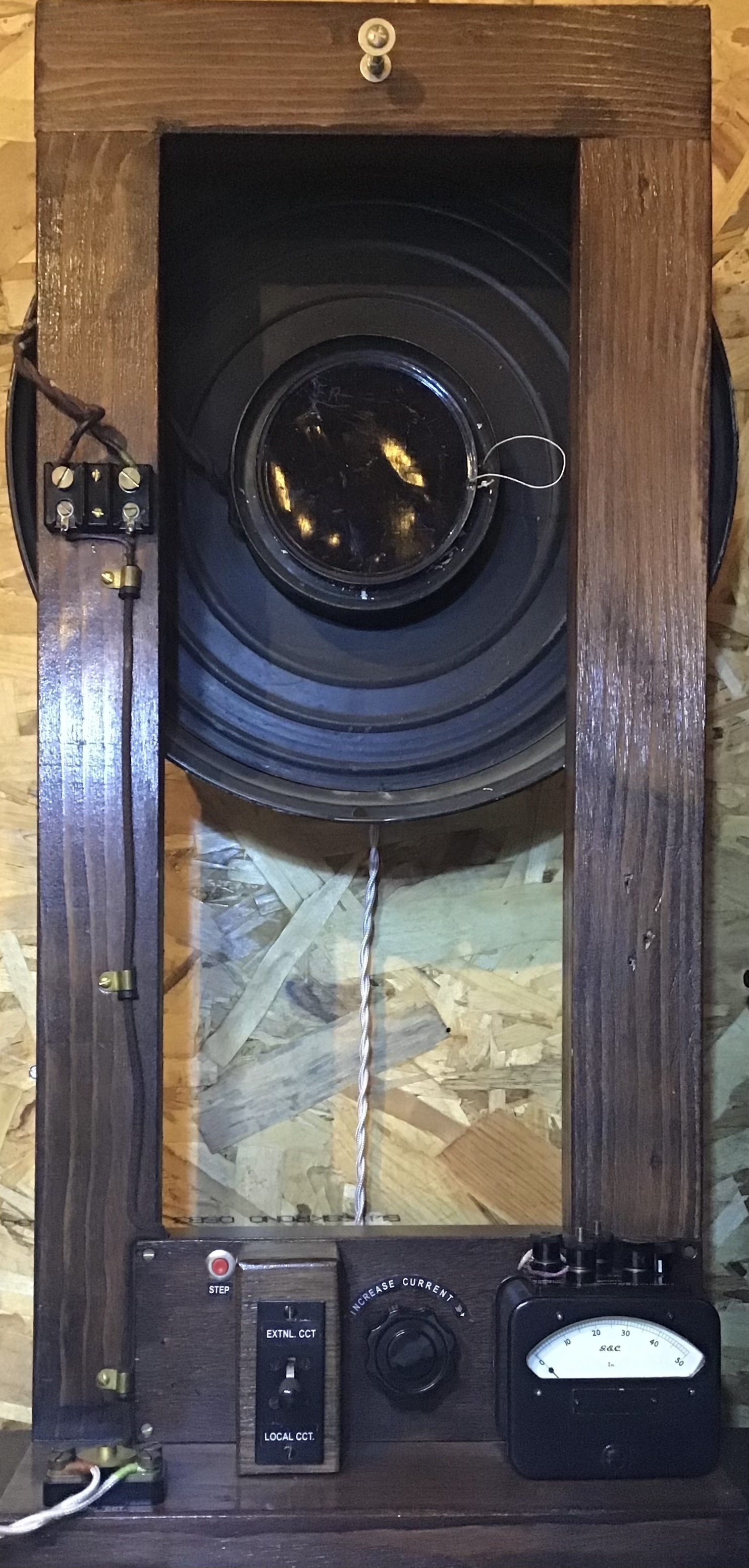
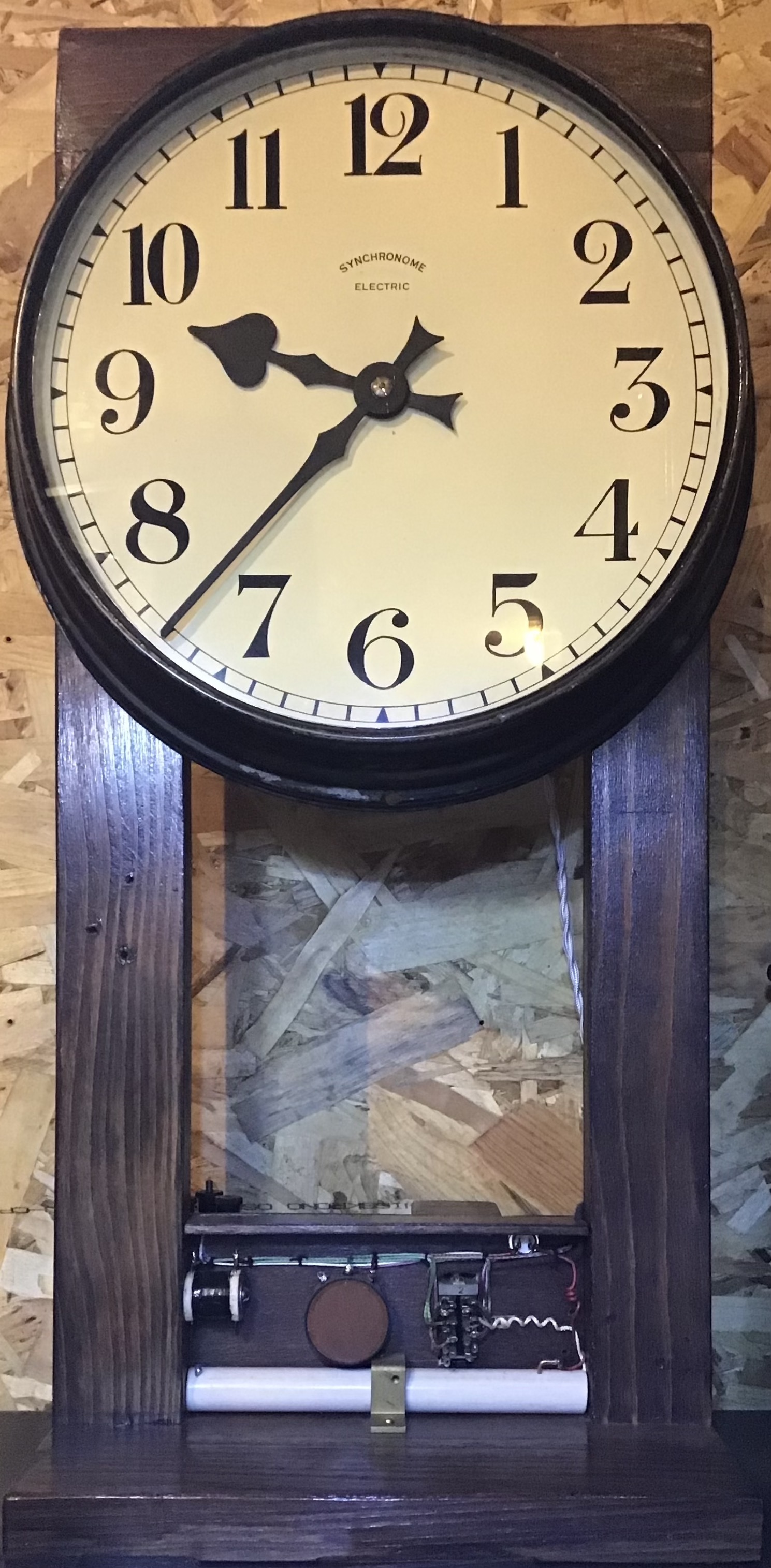
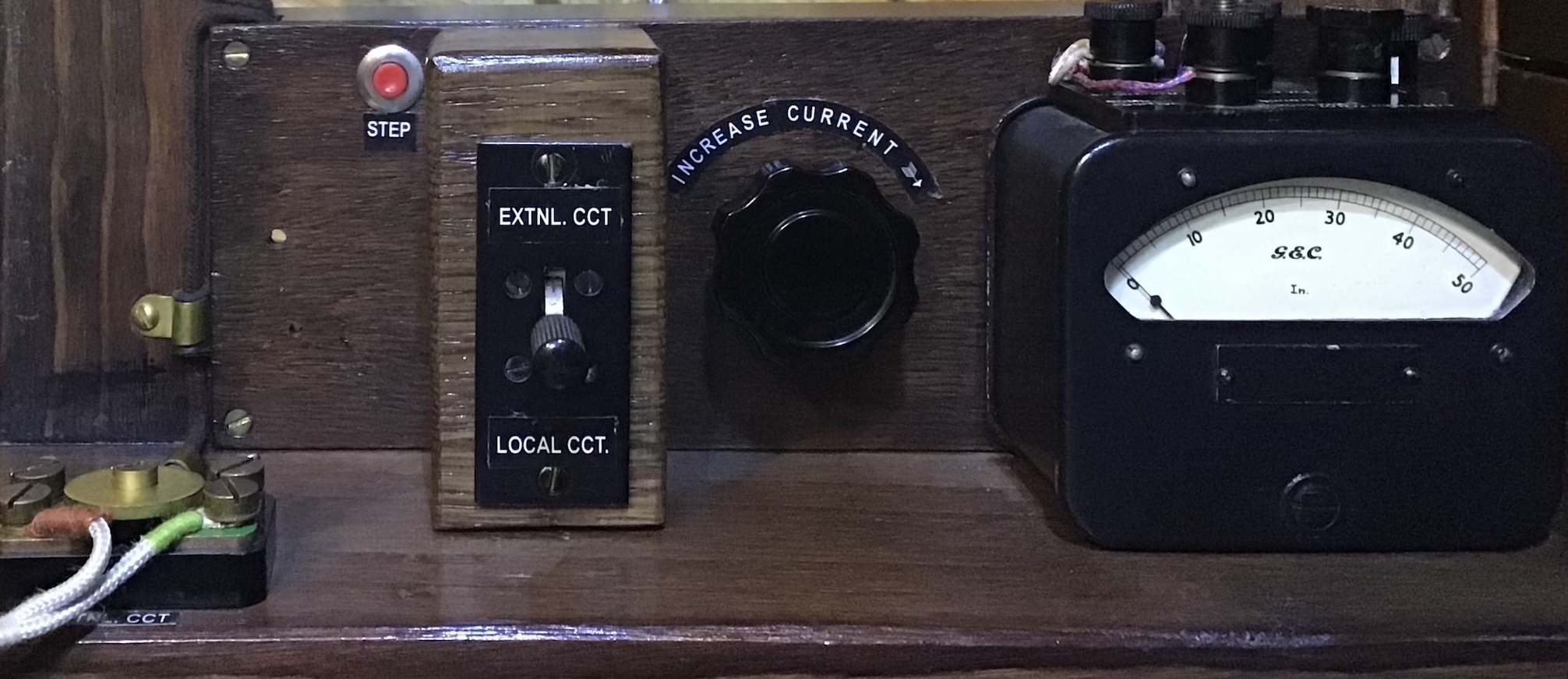
END